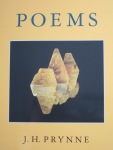
With a mixture of playful good humour and mordantly intricate style Henry James came to terms with the failure of his venture into the world of the London stage. The hissing and booing that greeted the curtain call for Guy Domville in 1895 gave him, according to Frank Kermode, ‘one of his worst moments, and confirmed his scepticism as to the existence of any considerable literate public’, a public capable of that measure of cooperation an artist might reasonably look for.
Reflecting perhaps upon the difference between a quality of writing and ‘fame’ in the market-place James wrote two short stories in response to his ‘failure’. ‘The Next Time’, published in The Yellow Book, deals with a lady novelist whose potboilers have ensured her both fame and money yet who also, just for once, wishes to be taken more seriously, to reach the ‘heroic eminence’ of being regarded as ‘an exquisite failure’:
‘A failure now could make—oh with the aid of immense talent of course, for there were failures and failures—such a reputation!’
Her desire to be serious flies directly in the face of a literary world of ‘trash triumphant’.
When the first collection of Poems by J.H. Prynne appeared in 1982, splendidly published by Allardyce, Barnett, it attracted the notice of Peter Porter who observed that there was ‘more of the world most of us live in, where people meet and talk, read books and exchange opinions, than there is in the poetry of Hughes and Heaney’. He also noted the ‘ghosts of traditional rhyming poems’ lurking like a complex figure, a string that Vereker’s pearls are strung on! The appropriateness of James’s image is brought into focus when one looks at Prynne’s note appearing at the end of ‘The First Students’ English Magazine of Guangzhou University’, published ten years ago, in which he referred to the ‘pearl-bright moments and shining articles all moving along in the currents of these changing times’.
When the first Bloodaxe Poems appeared in 1999 it was dedicated to Bernard Dubourg, the French translator of Chansons A La Journée-Lumière (1975), Séquentiel Diurne (1975) and Poèmes de Cuisine. The last of these was a collaborative effort between the English and French poet. The wording of the dedication made it clear that it was in memory of this French poet who had died in 1992 and when the second edition of Poems appeared in 2005 from Bloodaxe it was dedicated to Edward Dorn who had died in 1999, ‘his brilliant luminous shade’. This third edition which brings the reader right up to date with the inclusion of Refuse Collection (2004), To Pollen (2006), Streak—Willing—Entourage Artesian (2009), Sub Songs (2010), Kazoo Dreamboats; or, On What There Is (2011) and Al-Dente (2014) is simply given the epigraph ‘For the Future’. The new edition also contains ‘6 Uncollected Poems’. Whilst the whole volume looks both forwards and outwards it may not be too fanciful to suggest that the concluding poem in Al-Dente acts as a type of personal dedication to Tom Raworth, ‘fill to all loyal found’.
This is a note merely to alert readers to this important publication which is due to appear on the Bard’s birthday, 23rd April. A full-length review will certainly appear in the next issue of Tears.
Ian Brinton 30th March 2015






